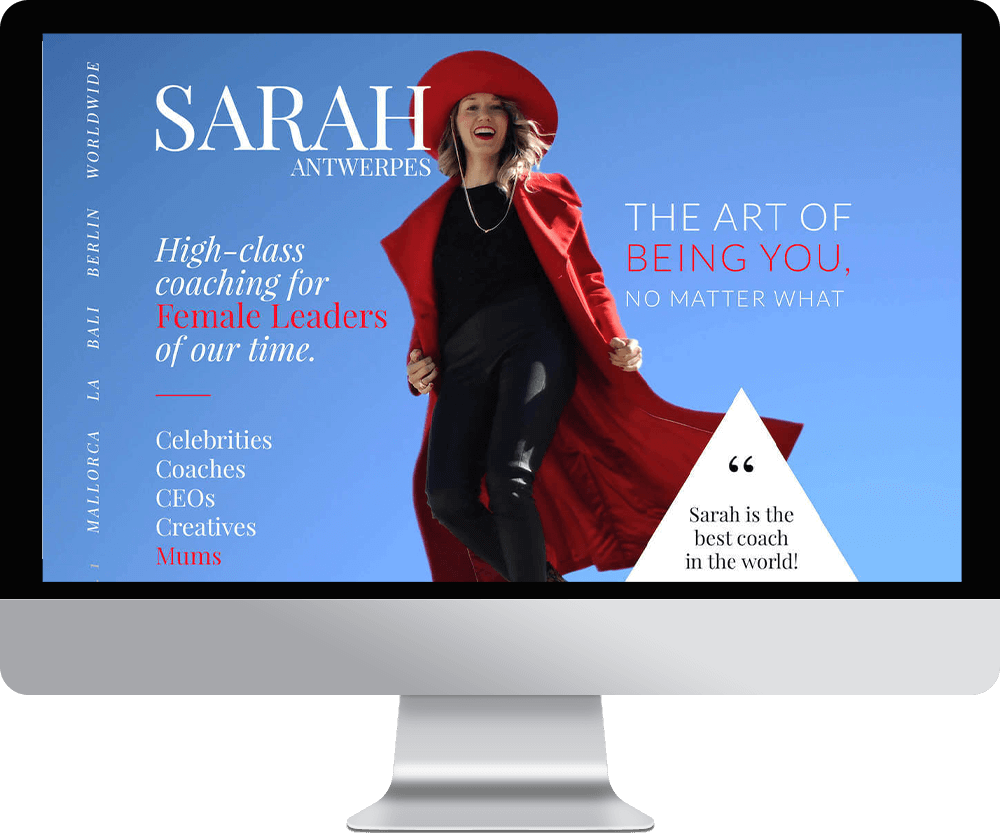In the age of digital marketing, influencers have emerged as powerful voices that can sway public opinion and drive brand engagement. Whether you’re a seasoned influencer or just starting out, having a well-crafted influencer media kit is essential. This comprehensive guide will delve into the basics of what an influencer media kit is, why it’s crucial, and the key components you should include.
What is an Influencer Media Kit?
An influencer media kit is akin to a digital portfolio. A professional document that social media influencers and content creators share with potential clients. It’s a reflection of your personal brand, showcasing your work, strengths, and the demographic information about your following. Think of it as your digital resume, packed with all the essential details that brands need to know about you. It is best made online, on a custom website. This ensures the information is both visually stunning, and always up to dat.
The Importance of an Influencer Media Kit
- Professional Edge: Stand out in a saturated market. A media kit offers a competitive advantage over those without one.
- Efficiency: Bypass the repetitive cycle
- of addressing identical queries from various brands. Your media kit delivers all the requisite information in one go.
- Target the Right Brands: By emphasizing your niche, past endeavors, and audience insights, you magnetize brands that resonate with your ethos and followers.
Essential Elements of an Influencer Media Kit
- Brief Bio: Introduce yourself, narrate your influencer journey, and pinpoint what sets you apart.
- Performance Insights: Highlight metrics such as follower count, engagement rates, and average interactions per post.
- Audience Insights: Delve into your followers’ demographics like age, gender, geographical location, and preferences.
- Engagement Analytics: Offer data on audience engagement patterns, including likes, shares, and comments.
- Previous Partnerships: Flaunt your past collaborations, campaigns, and any significant outcomes.
- Visuals: Incorporate high-resolution images of yourself, prior campaigns, or other pertinent visuals.
- Collaboration Avenues: Specify the collaboration formats you’re receptive to, be it sponsored content, event participation, or product critiques.

Make your Influencer Media Kit stand out Above the Rest
An often-underestimated component that can significantly elevate an influencer media kit is the inclusion of case studies and success stories. These narratives not only highlight your achievements but also offer tangible evidence of your influence and effectiveness.
Use a Case Studies in your Kit
Another indispensable element that can elevate your influencer media kit is the integration of case studies and success stories. These not only showcase your achievements but also provide tangible evidence of your influence and effectiveness.
- They serve as a Proof of Impact. Brands are keen to collaborate with influencers who can drive tangible results. Showcasing specific campaigns where you’ve made a mark provides concrete evidence of your value.
- Narrative Engagement is key. A well-told success story can captivate potential collaborators, making your media kit stand out.
- They Highlight Versatility. Diverse case studies can demonstrate your adaptability in managing various brands, products, or campaigns, enhancing your appeal for a range of collaborations.
Incorporating Case Studies Effectively
- Detail is Crucial. Rather than vaguely stating that a campaign was a hit, delve into specifics. For example, “My collaboration with Brand X led to a significant uptick in their website traffic and a notable boost in sales over a month.”
- Visuals Speak Volumes. Use screenshots, analytics graphs, or before-and-after stats to provide a visual representation of a campaign’s success.
- Testimonials Add Credibility. Whenever possible, weave in a quote from the brand or company you worked with. A testimonial like, “Our collaboration with [Your Name] was a game-changer,” can be incredibly impactful.
- Diversity in Examples. Ensure your case studies span a spectrum of collaborations, from product endorsements to awareness drives, to showcase the breadth of your expertise.
- Storytelling is an Art. Present each case study as a journey – starting with the brand’s challenge, moving to the strategy you devised, the execution, and culminating in the results. This narrative approach makes your success stories more compelling.
By weaving in detailed case studies and success stories into your media kit, you not only underscore your past successes but also offer potential collaborators a vivid picture of the benefits of partnering with you.
Interactive Media and Multimedia Integration
In the digital age, merely listing achievements and stats might not be enough. The integration and design of interactive media and multimedia elements can truly make an influencer media kit stand out, offering a dynamic and immersive experience for potential collaborators.
Why Interactive Media Matters
- Engaging Experience: Multimedia elements, such as videos, GIFs, or interactive charts, can make your media kit more engaging, ensuring it leaves a lasting impression.
- Show, Don’t Just Tell: Instead of just talking about a successful campaign, why not show a highlight reel? Videos or image carousels can provide a richer understanding of your work.
- Tech-Savvy Impression: Brands appreciate influencers who are ahead of the curve. An interactive media kit can showcase your tech-savviness and your ability to leverage modern digital tools.
Incorporating Multimedia Effectively
- Quality Over Quantity: It’s essential to ensure that any multimedia you include is of high quality. A well-edited video or high-resolution images can speak volumes about your professionalism.
- Optimize for All Devices: Ensure that videos play smoothly, and interactive elements work seamlessly across all devices, from desktops to mobiles.
- Embed Social Media Feeds: Consider embedding live feeds of your most active social media platforms. This gives viewers real-time insights into your latest posts and engagements.
- Use Augmented Reality (AR): If you want to push the envelope, consider integrating AR elements. For instance, a scannable QR code that leads to an AR experience showcasing a product you promoted can be a game-changer.
By integrating interactive media and multimedia elements into your media kit, you not only provide a richer, more engaging experience but also position yourself as a forward-thinking influencer, ready for the evolving digital landscape.
Crafting Your Influencer Media Kit: A Step-by-Step Guide
- Draw from the Best: Begin by exploring media kits from leading influencers. This not only provides a benchmark, but can also ignite creativity and help you identify unique elements you might want to incorporate.
- Determine Your Presentation: Whether it’s a sleek PDF, an interactive webpage, or a dynamic digital portfolio, choose a format that aligns with your brand and is easily accessible to potential collaborators.
- Gather Relevant Insights: Dive deep into your social media analytics. Extracting key performance metrics and understanding your audience demographics will provide a solid foundation for your media kit.
- Highlight Collaborative Successes: Instead of just listing past collaborations, weave in testimonials or feedback. Positive endorsements from brands can significantly bolster your credibility.
- Narrate Your Journey: Your bio is more than just a summary. It’s a chance to share your story, your passion, and what sets you apart in the influencer realm. Craft it with authenticity and enthusiasm.
- Prioritize Aesthetics: Your media kit isn’t just about information; it’s a reflection of your brand. Given the discerning nature of your audience, ensure it’s visually compelling. Whether you opt for ready-made templates or enlist the expertise of a designer, aim for a design that resonates with your personal brand and appeals to potential partners.
With these steps in mind, you’ll be well-equipped to create a media kit that not only showcases your achievements but also sets the stage for future collaborations.
Evolving with the Digital Landscape: MediaKit Updated
In the ever-changing realm of digital influence, resting on your laurels isn’t an option. Your media kit, as a reflection of your brand and achievements, should evolve just as dynamically as the digital landscape does.
- Regular Reviews: Set aside time, perhaps quarterly, to review and update your media kit. This ensures that all metrics, testimonials, and collaborations are current.
- Stay Abreast of Trends: As new social platforms emerge and audience preferences shift, adjust your media kit to reflect these changes. For instance, if short-form video content becomes the rage, consider highlighting your prowess in that domain.
- Feedback is Gold: After sharing your media kit with potential collaborators or brands, solicit feedback. Understanding what resonated with them or what they felt was missing can provide invaluable insights for future iterations.
- Celebrate New Achievements: Regularly update your success stories and case studies. Every successful collaboration or milestone reached is another feather in your cap, deserving of a spot in your media kit.
- Adapt the Design: Just as content needs refreshing, so does design. Periodically revamp the aesthetics of your media kit to keep it fresh, modern, and in line with current design trends.
- Integrate New Technologies: As technology advances, there might be new tools or interactive elements you can incorporate to make your media kit more engaging. Stay open to these innovations.
Conclusion
The Power of a Well-Crafted Influencer Media Kit
In the digital realm, where influencers play a pivotal role in shaping brand narratives and influencing consumer choices, the importance of a robust and dynamic media kit cannot be overstated. It’s not just a document; it’s a testament to an influencer’s journey, achievements, and potential.
From understanding the essence of a media kit to diving deep into its various components, this guide has aimed to provide a holistic view of what makes a media kit truly impactful. Whether it’s the compelling narrative of your bio, the tangible results showcased in your case studies, or the innovative integration of multimedia elements, each aspect plays a crucial role in painting a comprehensive picture of your influencer brand.
But beyond its creation, the real power of a media kit lies in its evolution. As the digital landscape shifts and grows, so should your media kit. Regular updates, staying attuned to trends, and being receptive to feedback ensure that your media kit remains relevant, compelling, and a true reflection of your ever-evolving influencer journey.
In essence, a well-crafted influencer media kit is more than just a tool for collaboration; it’s a strategic asset, setting the stage for meaningful partnerships, amplifying brand messages, and forging a path of continued digital influence.
FAQ
- What is included in an influencer media kit?
It should encompass a bio, performance insights, audience demographics, engagement analytics, past partnerships, visuals, and collaboration avenues. - How do I curate an influencer media kit?
Initiate by accumulating data, seeking inspiration, selecting a format, gathering testimonials, drafting your bio, and integrating design elements. - What’s a media card for influencers?
A media card is a succinct version of a media kit, spotlighting an influencer’s most salient details. - How should micro influencers design their media kit?
The approach remains analogous, but micro influencers might accentuate their specialized audience and distinct value propositions.
